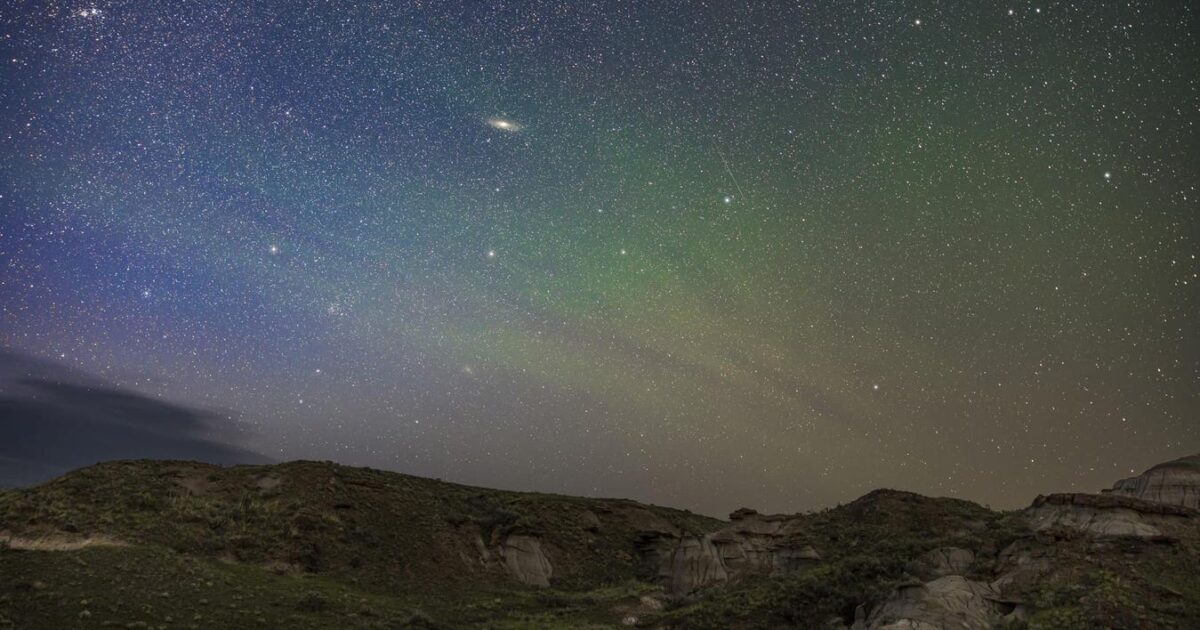Don’t Miss Saturn Shining Under The ‘Great Square’ Stars This Week

The Great Square of Pegasus, on the right in this image, is visible above the east after dark, with Saturn underneath (Photo by: Alan Dyer/VW Pics/Universal Images Group via Getty Images)
VW Pics/Universal Images Group via Getty Images
September’s equinox — equal night, equal day — is coming up on Sept. 22 and will signal the beginning of fall/autumn, but the night sky is one step ahead.
Right now is when to look for one of the most recognizable patterns of stars in the Northern Hemisphere’s night sky — the Great Square of Pegasus. Visible all month after dark, this four-star formation rises above the eastern horizon, signaling the change of seasons.
When And Where To See It
To see the Great Square, face east after dark. Look for four bright stars of nearly equal brightness forming a diamond-like shape. The top star is Scheat, flanked by Alpheratz on the lower left and Markab on the lower right. At the bottom, closest to the horizon, lies Algenib.
Can you see it? Despite urban light pollution, the Great Square remains relatively easy to identify thanks to its brightness and obvious shape.
In darker skies, you’ll notice faint stars within the diamond, but spotting more than four or five requires very clear conditions. Exactly what you can see in and around the Great Square is a good way of gauging the effect, or not, of light pollution.
The Pegasus constellation in the night sky.
getty
Observing Tips
The Great Square is very simple to locate — it will be high in the sky and its four corner stars are bright. However, there is a guide “star” close by this month that can help you double-check.
Glowing a slightly golden color is Saturn, which on Sept. 21 reaches its annual opposition. Every year, Earth passes directly between a planet and the sun, giving us the best view of the year. At opposition, Saturn rises at sunset and sets at sunrise, shining at magnitude 0.6. Through a small telescope, Saturn’s rings will be nearly edge-on, but still visible. Neptune follows suit just two days later, making both ideal telescope targets.
What’s Next in the Night Sky
The Great Square of Pegasus is fall’s hallmark, but there’s plenty more going on in the night sky in September. Best seen an hour before sunrise, a rare five-planet parade stretches across the sky. Venus blazes low in the east, followed by brilliant Jupiter and Saturn, while dimmer Uranus and Neptune linger in the background.
The equinox on Sept. 22 also marks peak season for the Northern Lights. Thanks to the Russell-McPherron effect — when Earth’s and the Sun’s magnetic fields connect most efficiently — geomagnetic storms tend to intensify around this time. Although only visible from New Zealand, Antarctica and the western South Pacific, there’s a partial solar eclipse on Sept. 21-22, 2025. Straddling the date line, it will see up to 86% of the sun’s disk obscured by the moon, producing a striking crescent-shaped sunrise.
October could see something really special as Comet Lemmon (C/2025 A6) comes into view. Discovered earlier this year, it will pass closest to Earth on Oct. 20-21, just as the Orionid meteor shower peaks under a new moon. If brightness predictions hold (and they may not), this icy wanderer could glow brightly enough to be seen with just the naked eye.
Wishing you clear skies and wide eyes.

